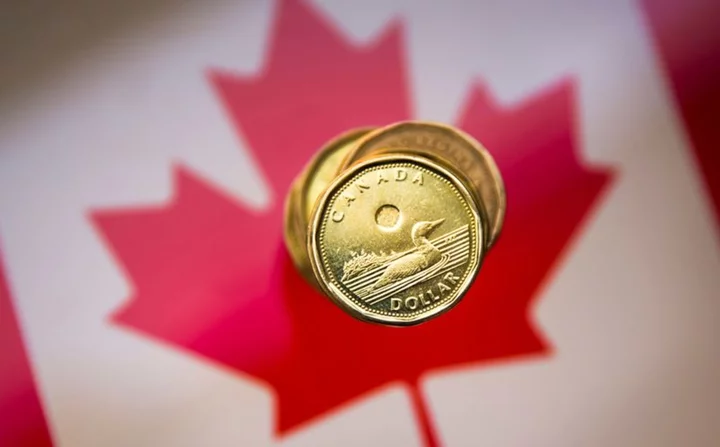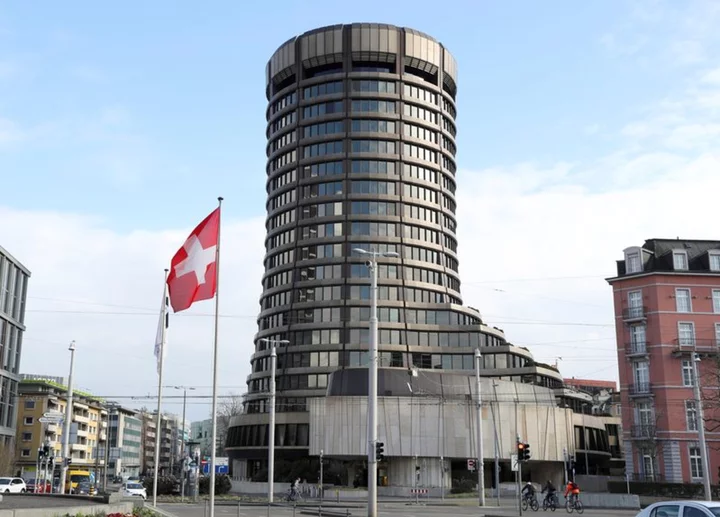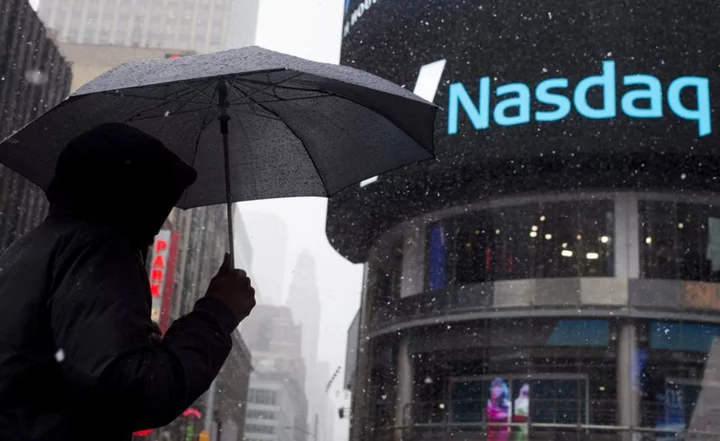A look at the day ahead in U.S. and global markets from Mike Dolan
Wildfire smoke wasn't the only cloud from Canada that drifted over the United States this week.
The Bank of Canada's resumption of interest rate rises after a four-month pause blurred the horizon for Federal Reserve policy somewhat too, reminding markets that central banks still see inflation as way too high and rate hikes are not done yet.
It was enough to nudge borrowing rates back up slightly across the maturity spectrum and served a shot across the bow to otherwise buoyant stock markets and subdued risk gauges.
While it's rare for Canadian policy to affect thinking on the Fed, it also followed an Australian rate rise this week and gives a sketch of monetary policymakers' calculations at midyear.
The basic picture hasn't changed greatly, however. Futures markets still see the Fed skipping a rate rise next week, delivering one final quarter-point hike in July and reversing that move by year end.
The chances of a surprise move next week crept up marginally to 30% and the July hike is more fully priced. Two-year Treasury yields firmed about 10 basis points to 3.80% - and sovereign debt yields around the world edged higher in sympathy.
With Fed policymakers in a blackout period before next week's meeting, and new data points thin this week, market edginess was dominated by shifting sentiment more than anything.
Weekly U.S. jobless claims numbers will be watched closely as always later on Thursday but the May consumer price inflation report next week looms largest as a possible game changer before the Fed decides.
Tighter rates put some attention back on Treasury's plans to refill its depleted coffers with a wave of new bill sales now that the debt ceiling has been lifted. Details of those plans on Wednesday have done little to disturb the bill market so far, with one-month yields dipping back below 5% on Wednesday for the first time since May 4.
Stock markets dialled back a bit from 2023 highs - with the year's biggest winners so far - the most rate-sensitive tech sector - underperforming on Wednesday. The small-cap Russell 2000 climbed almost 2%, however.
And volatility gauges remain very subdued.
The VIX index clocked another post-pandemic closing low and remains close to that on Thursday. The MOVE index of bond volatility edged back higher from 3-month lows set the previous session, but overall currency volatility hit its lowest since February 2022.
Elsewhere, China's yuan set another low for the year as the country's monetary policy goes in the opposite direction.
China's biggest banks said they have lowered interest rates on yuan deposits, in actions that could ease pressure on profit margins, reduce lending costs and provide some relief for the financial sector and wider economy.
Turkey's ailing lira spiralled ever lower to new records as the government abandons support due to depleted reserves that were drained propping up the currency before the election. It hopes it will find some competitive level on the open market, though few know now were "fair value" lies.
In the bamboozled crypto world, hit by serial U.S. regulatory crackdowns on big exchanges this week, the latest sideswipe came from Brussels over advertising.
Events to watch for later on Thursday:
* U.S. weekly jobless claims, April wholesale inventories/sales
* Federal Reserve issues quarterly financial accounts of the United States, first quarter "flow of funds" data on household financial health, and weekly balance sheet
* U.S. Treasury auctions 4-week bills
(By Mike Dolan, editing by Jane Merriman mike.dolan@thomsonreuters.com. Twitter: @reutersMikeD)









